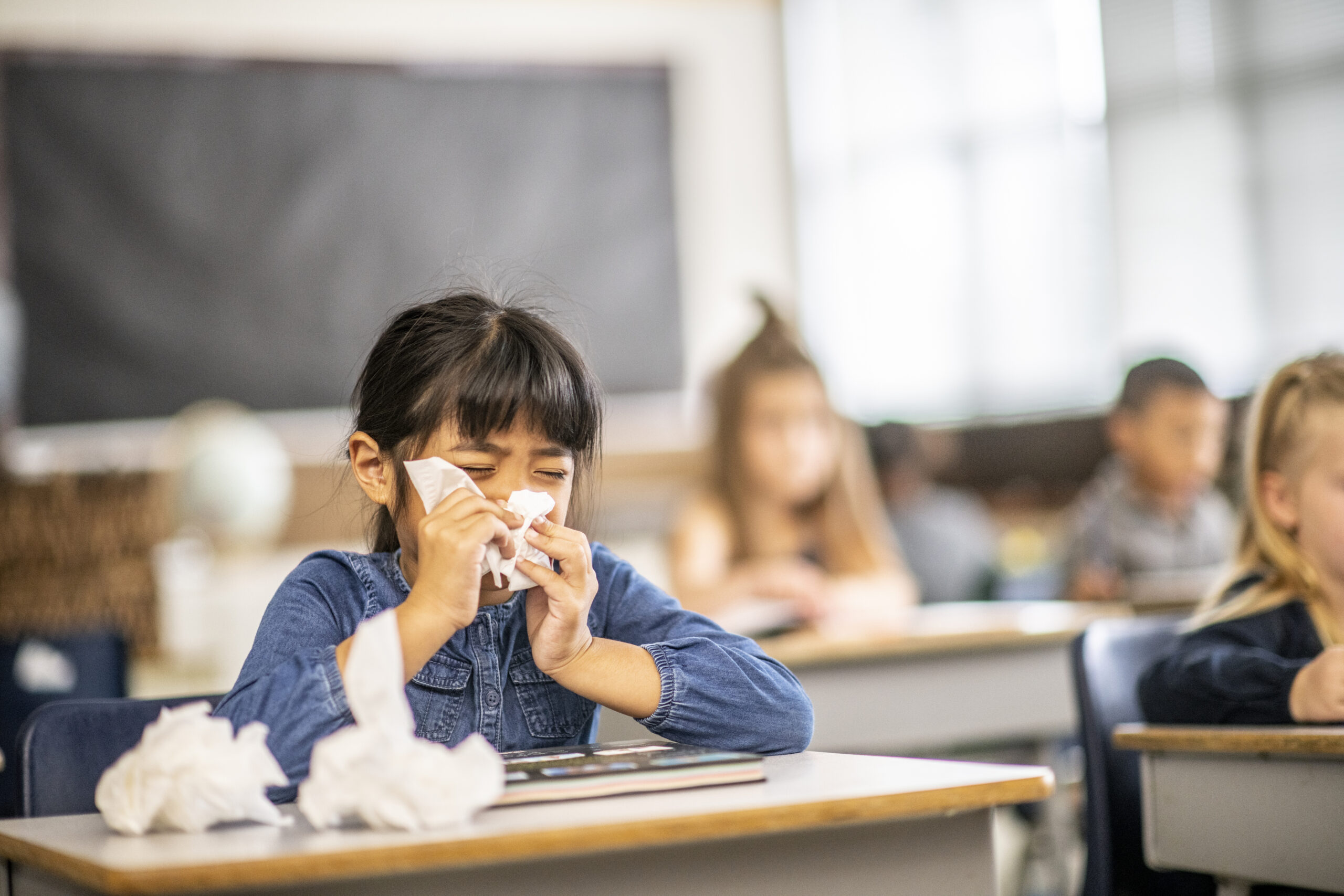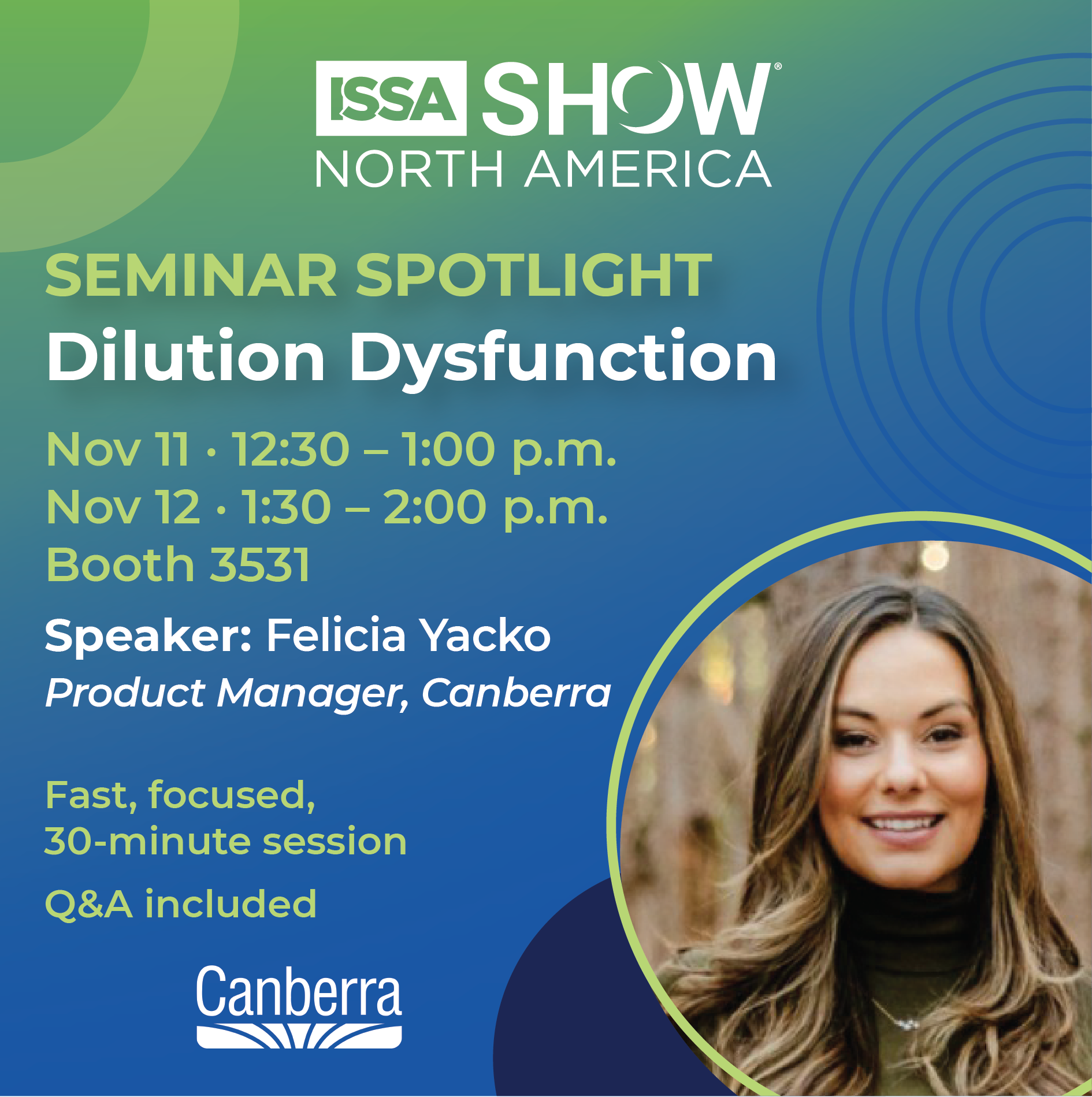As students head back to school, so do the germs. Classrooms fill with energy, excitement, and unfortunately, illness. From stomach bugs to strep throat, schools are a hotspot for the rapid spread of infectious diseases that can sideline students and staff.
According to a report cited by SouthCoast Health, 22 million school days are lost each year due to the common cold, and another 38 million are lost due to influenza (SouthCoast Health). Beyond short-term absences, chronic school absenteeism has been linked to lower academic performance, reduced school engagement, and even higher dropout risk, which can have long-term effects on health and well-being (CDC NHIS Data Brief, 2024).
The Problem: High-Touch, High-Risk
Shared surfaces and crowded spaces make schools ideal environments for germs to spread. Desks, light switches, doorknobs, water fountains, and cafeteria tables are just a few of the many high-touch areas where bacteria and viruses can linger. Without consistent disinfection, those germs can transfer from one student to the next, leading to spikes in illness and absenteeism.
How to Disinfect Properly: What Schools Need to Know
Effective disinfection isn’t just about spraying and wiping. It’s about using the right product, in the right way, with the right tools. Here’s how to do it correctly, based on CDC guidance and real-world best practices:
- Clean First, Then Disinfect
Start by removing visible dirt, dust, and debris. Disinfectants work best on clean surfaces. Skipping this step can limit their effectiveness. - Use EPA-Registered Disinfectants
Always choose disinfectants that are EPA-registered and approved for the pathogens you’re targeting. Products like Husky Peroxall® TB and JAWS® Duo Complete are effective against viruses and bacteria that commonly cause illness in schools, including Influenza A, Norovirus, MRSA, and SARS-CoV-2, the virus that causes COVID-19. With kill times as quick as 30 seconds for SARS-CoV-2 and as little as 1 minute for many other pathogens, these disinfectants help schools maintain safe learning environments without slowing down daily cleaning routines. - Pay Attention to Dwell Time
Dwell time is the amount of time a surface must remain visibly wet to effectively kill pathogens. It’s not optional. Wiping a surface dry too soon can leave harmful germs behind. - Choose Tools That Maximize Coverage and Efficiency
Tools matter. Flat mop systems like the JAWS® Professional Mopping System help cover large floor areas quickly while ensuring consistent application. They’re especially useful in hallways, gymnasiums, and multipurpose rooms. For desks, restrooms, and shared surfaces, microfiber cloths and trigger sprayers help ensure thorough, even application. - Make It Routine
High-touch surfaces should be disinfected daily, and more often during peak cold and flu season. The CDC recommends integrating disinfection into standard operating procedures, especially for shared objects and frequently used areas. - Keep Safety in Mind
Use low-VOC, bleach-free products that are safer for use around students and staff. Peroxall TB and Duo Complete are both non-bleach, alcohol-free options with a lower toxicity profile, making them suitable for use in occupied school environments.
Why This Matters
When cleaning is done right, schools can help break the cycle of illness and absenteeism. Fast, effective disinfection keeps classrooms open, protects vulnerable populations, and supports healthier learning environments without overcomplicating custodial workflows.
Need Guidance? We’re Here to Help.
If you’re evaluating your school’s cleaning protocol or looking for safer, faster options that meet your operational needs, our team is here to help.
Contact us today or reach out to your Canberra rep for product support, training tools, or custom recommendations tailored to your facility.




